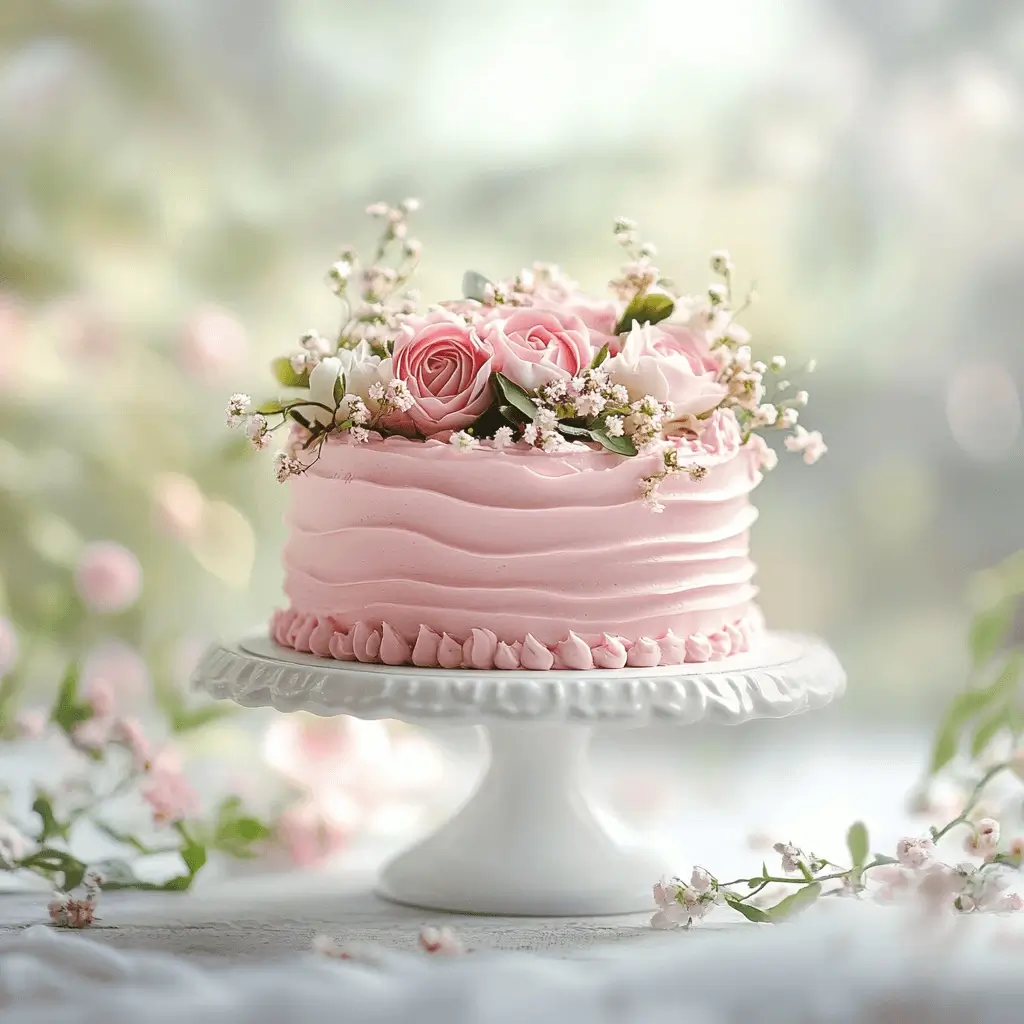Introduction: The Irresistible Allure of the Pink Cake
Few desserts capture attention quite like a pink cake. With its soft, inviting hue and endless possibilities for flavor and decoration, the pink cake is more than just a sweet treat—it’s a statement. Whether gracing a baby shower, birthday table, or elegant tea party, its charm is universal. But achieving that picture-perfect pink cake isn’t just about adding a drop of food coloring to your batter. It’s about crafting the perfect balance of color, taste, texture, and style.
In this guide, you’ll discover everything you need to know about pink cake perfection—from the science behind a moist, fluffy crumb to professional-grade decorating tips. We’ll explore classic and modern flavors, natural vs. artificial colorings, and show you how to adapt your pink cake for any occasion. Whether you’re a seasoned baker or just starting out, this post will empower you with all the tricks and techniques to create a pink cake that’s every bit as stunning as it is delicious.
So grab your spatula, preheat your oven, and let’s turn your pink cake dreams into reality.
What Makes the Perfect Pink Cake?
Creating the perfect pink cake is both an art and a science. It’s not just about achieving that dreamy blush hue—it’s about combining visual appeal with irresistible flavor and texture. A truly standout pink cake is one that looks enchanting on the outside and delivers a satisfying, flavorful experience with every bite. Here’s what makes it perfect:
1. A Thoughtful Flavor Base
The best pink cakes don’t rely on color alone. Start with a flavor that complements the pink palette—like strawberry, raspberry, rosewater, or even a creative twist like pink lemonade or lychee. Each brings its own character: fruity, floral, tangy, or creamy.
2. The Right Color, Naturally or Artificially
A vibrant pink cake doesn’t need to scream “artificial.” You can achieve stunning hues using natural options like beetroot powder, strawberry puree, or raspberry juice. Of course, high-quality gel-based food colorings also offer consistency and a wide spectrum of shades—especially useful when aiming for ombré or gradient effects.
3. Moisture and Texture Matter
No one remembers a dry cake. To achieve a moist, airy crumb:
- Use full-fat dairy products (milk, yogurt, or sour cream).
- Incorporate room-temperature ingredients to promote even mixing.
- Cream the butter and sugar thoroughly to trap air and help the cake rise.
- Avoid overmixing once the flour is added to keep the texture light.
4. Presentation Is Half the Magic
A pink cake should make people say “wow” before they even take a bite. Think: evenly stacked layers, smooth or textured frosting, complementary decorations like edible flowers, sprinkles, or seasonal fruit. A well-frosted pink cake, whether minimalist or over-the-top, is always a centerpiece.
A perfect pink cake is about more than good baking—it’s about thoughtful design, sensory balance, and joyful expression. And the best part? You don’t need to be a professional to make one. With the right guidance, anyone can achieve pink cake perfection.
Step-by-Step Guide: How to Bake the Ideal Pink Cake
Baking the perfect pink cake might seem intimidating, but with the right method and a bit of patience, it’s a fun and rewarding experience. This step-by-step guide walks you through every stage of the process—from gathering ingredients to layering and frosting—with precision and flair.
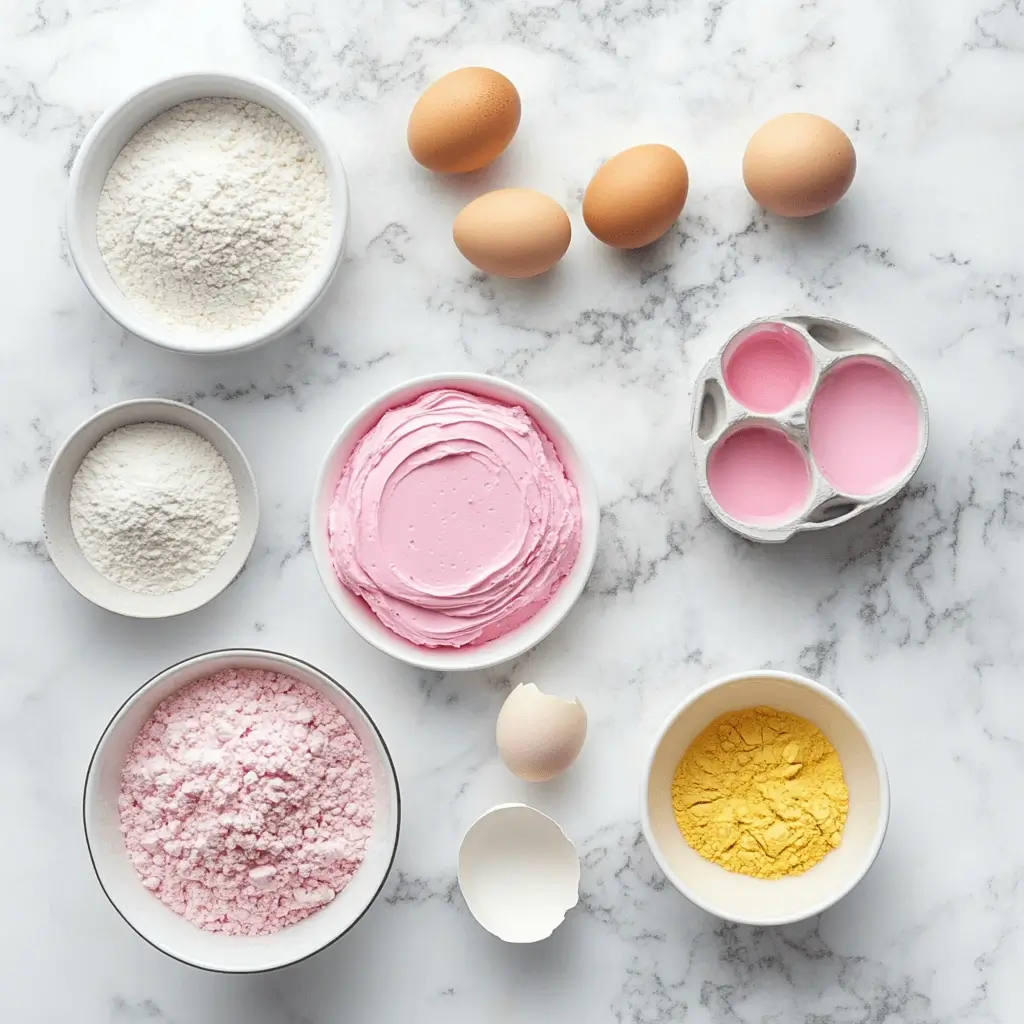
1: Assemble Your Ingredients and Tools
Preparation is key. Having everything ready will streamline the baking process and reduce errors. Here’s what you’ll need:
- Dry Ingredients: All-purpose flour or cake flour, baking powder, a pinch of salt, and sugar.
- Wet Ingredients: Unsalted butter, eggs, full-fat milk or buttermilk, vanilla extract, and pink food coloring (natural or gel-based).
- Flavor Add-ins (optional): Strawberry or raspberry puree, rosewater, or lemon zest.
- Tools: Mixing bowls, electric mixer, spatula, cake pans (preferably 2 or 3 for layering), parchment paper, cooling racks.
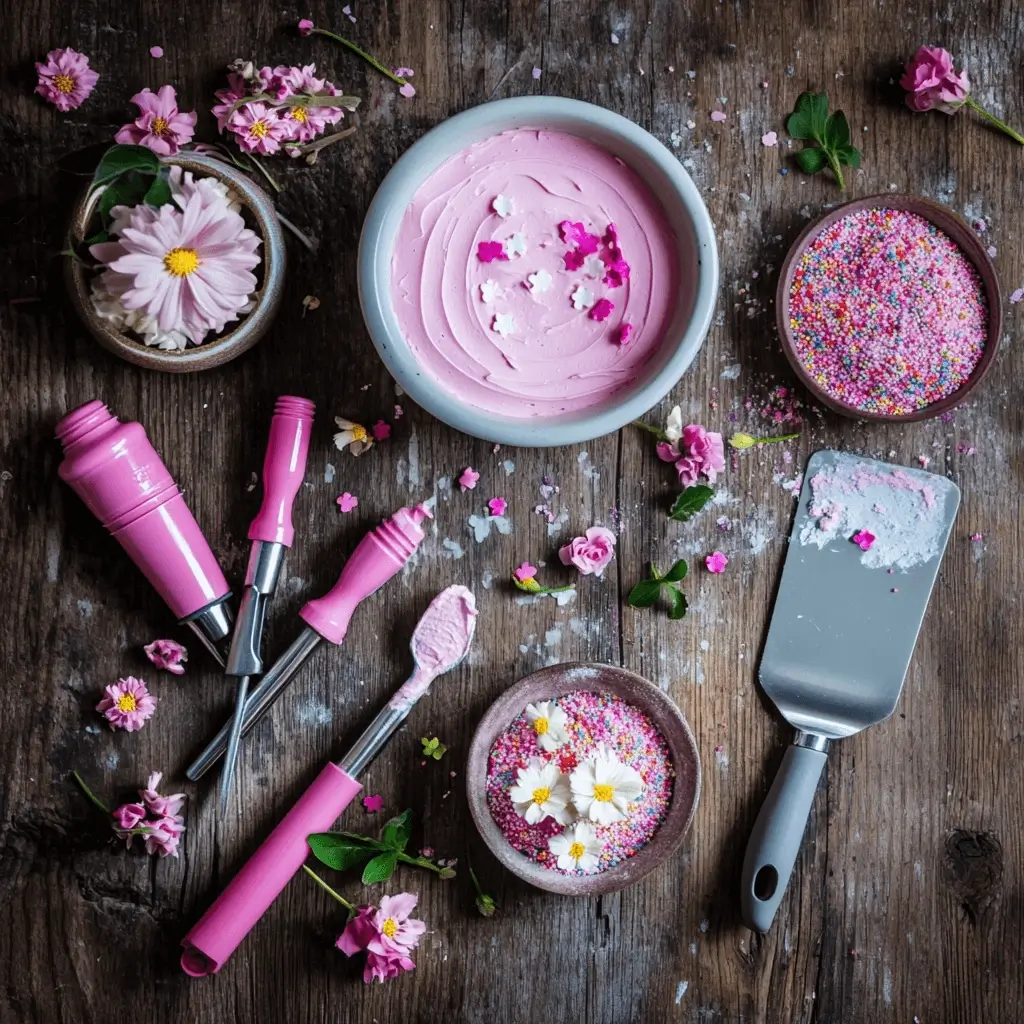
2: Mix the Perfect Batter
- Cream the Butter and Sugar – Beat until light and fluffy (about 3–5 minutes). This aerates the mixture and builds structure.
- Add the Eggs One at a Time – Mixing well between additions ensures a smooth, stable batter.
- Incorporate Flavor and Color – Add vanilla extract and your chosen natural or artificial pink coloring. If using fruit puree or floral essence, fold it in here.
- Alternate Wet and Dry Ingredients – Add flour mixture and milk/buttermilk in thirds, beginning and ending with dry ingredients. Mix just until combined to avoid overworking the gluten.
3: Bake It to Perfection
- Preheat Your Oven to 170°C (340°F). Make sure it’s fully up to temperature before your batter goes in.
- Prepare Your Cake Pans – Grease and line them with parchment to avoid sticking.
- Divide Batter Evenly among your pans for consistent baking.
- Bake for 25–30 Minutes or until a toothpick inserted in the center comes out clean. Resist opening the oven early to avoid sinking.
4: Cool, Stack, and Chill
- Let Cakes Cool in Pans for 10 Minutes before turning them out onto a wire rack.
- Trim the Tops if needed to level your layers.
- Apply a Crumb Coat – A thin base layer of frosting locks in crumbs.
- Chill the Cake for 20–30 minutes to set the crumb coat before final frosting.
Mastering this process ensures a beautifully baked pink cake that’s not only moist and delicious, but also picture-perfect and ready to decorate.
Frosting & Decorating Tips for a Gorgeous Finish
A beautifully baked pink cake deserves a stunning finish. The frosting and decorations are where you can truly make your cake shine—transforming it from a simple dessert into a captivating centerpiece. Whether you’re going for elegance, whimsy, or something completely out-of-the-box, these expert tips will help you elevate your pink cake with confidence and style.
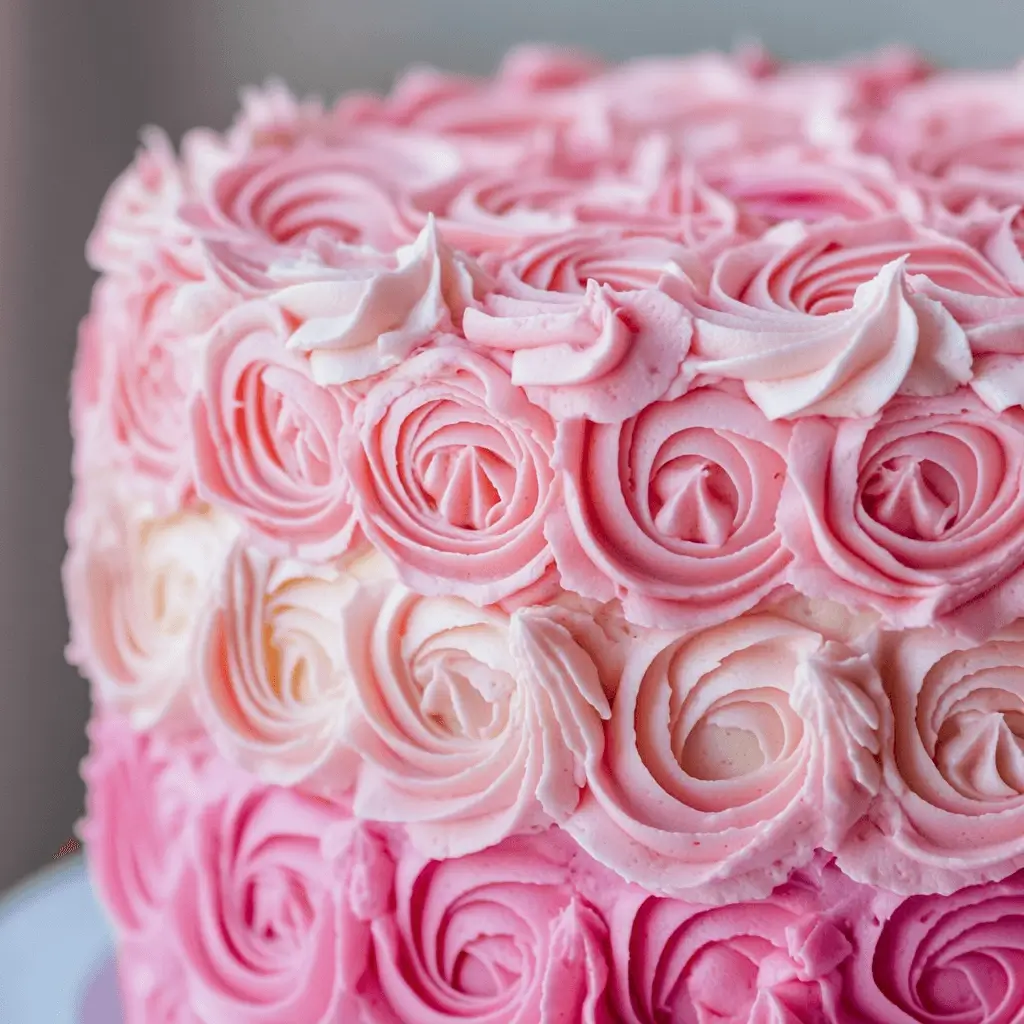
Choose the Right Frosting for Your Style
Not all frostings are created equal, and the one you choose will greatly influence both the flavor and look of your cake.
- Buttercream: Classic American buttercream is rich, sweet, and perfect for vibrant colors. If you prefer something lighter and silkier, Swiss meringue or Italian buttercream are excellent for smooth finishes and elegant piping.
- Cream Cheese Frosting: Pairs wonderfully with fruity or tangy pink cake flavors like raspberry or pink velvet, though it’s slightly softer and trickier for intricate designs.
- Whipped Cream: Ideal for a light, airy feel. It gives a soft texture but is less stable for detailed decoration.
Perfecting the Finish: Smooth vs. Textured
- Smooth & Sleek: For a clean, polished look, use an offset spatula and cake scraper. Chill your cake between layers to help stabilize the frosting.
- Rustic or Semi-Naked: For a more organic vibe, leave parts of the cake peeking through a thin frosting layer. Perfect for rustic weddings or minimalist aesthetics.
- Textured Effects: Use tools like combs or patterned scrapers for lines, swirls, or waves. This adds depth without requiring advanced skills.
Play with Color and Gradient
Pink cakes are perfect canvases for color play:
- Ombre Effect: Use multiple shades of pink frosting, gradually moving from dark at the base to light at the top. Blend the transitions for a watercolor feel.
- Two-Tone Contrast: Add white or gold accents to highlight the pink base, or incorporate complementary tones like lavender, peach, or mint.
- Metallic Details: Edible gold leaf, silver pearls, or shimmering sprays elevate the cake to a luxe level.
Top It Like a Pro
Finish your pink cake with thematic flair:
- Floral Touches: Fresh roses, carnations, or edible flowers add elegance. Just make sure they’re pesticide-free and safe for food contact.
- Candies & Sprinkles: Think pastel-coated chocolates, confetti sprinkles, or glitter sugar for birthdays or kids’ parties.
- Custom Toppers: Acrylic, wooden, or paper toppers personalize your creation. Whether it’s a name, age, or quote, this small detail makes a big impact.
- Fruit Accents: Raspberries, strawberries, or even sugared citrus slices complement pink cake flavors while adding visual punch.
Pro Tip: Less Is Sometimes More
It’s easy to get carried away with pink cake decorations—but balance is key. Aim for a cohesive look. If you’re going bold with color, keep the design minimal. If the cake is simple, go big on florals or texture.
With these decorating tips, your pink cake will be more than just a dessert—it’ll be a delicious piece of edible art, worthy of any occasion.
Common Pink Cake Mistakes & How to Avoid Them
Even seasoned bakers can fall victim to small errors that sabotage an otherwise beautiful pink cake. From dull colors to dry texture, mistakes can take your cake from fabulous to forgettable. But don’t worry—we’ve rounded up the most common pink cake pitfalls, along with practical solutions to help you sidestep them with confidence.
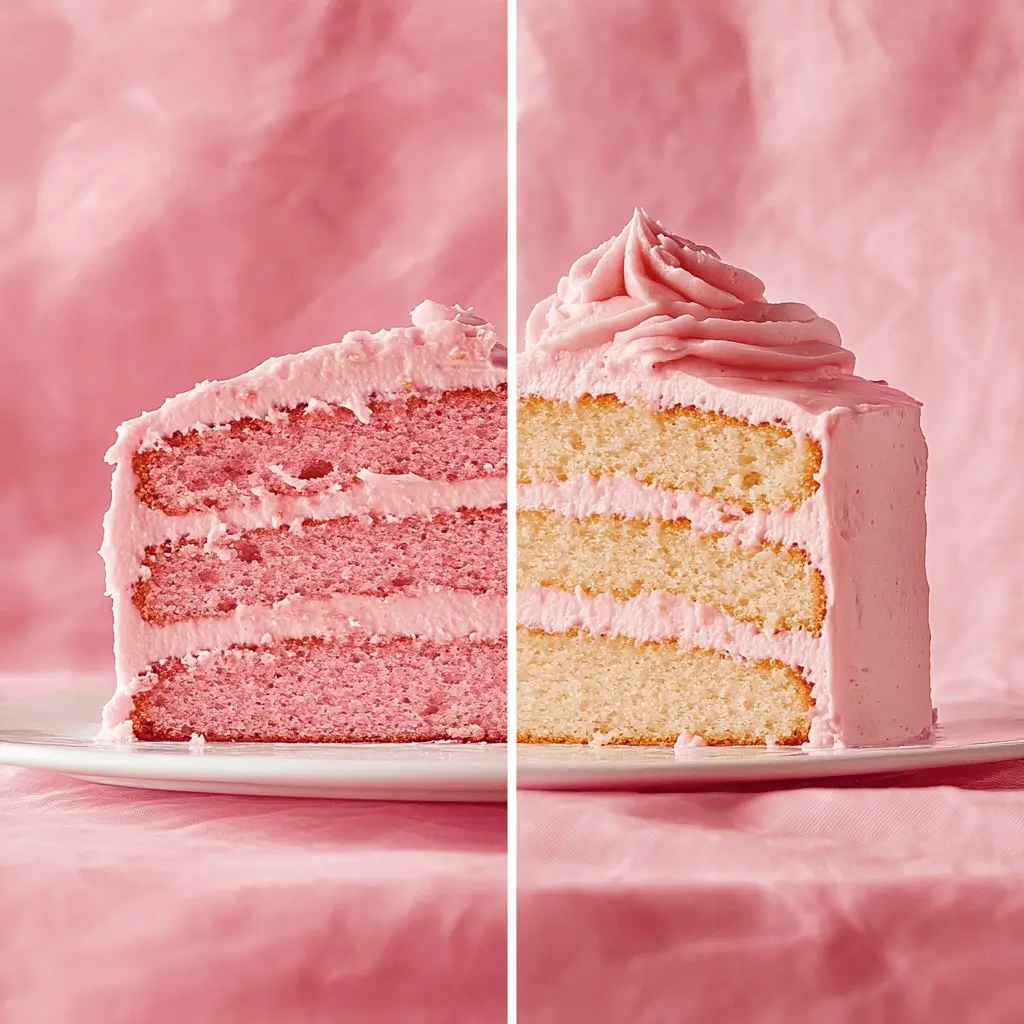
1. The Color Comes Out Dull or Grey
You wanted vibrant blush or rosy pink… and ended up with a sad, muddy shade. This often happens when:
- Using too much coloring: Especially with liquid dyes, the batter becomes oversaturated.
- Overbaking: Heat can alter the tone of natural colors, fading or browning them.
- Using the wrong base: Yellowish batters can distort pink into orange or beige tones.
Fix it:
Use gel-based food coloring for vivid hues. For natural options, concentrate your purees or powders and test a small batch first. Always bake at the recommended temperature and avoid overexposure to heat.
2. Dry or Dense Texture
A gorgeous pink cake that’s dry inside is a major letdown. This is often caused by:
- Overmixing the batter, which tightens the gluten structure.
- Overbaking, which evaporates too much moisture.
- Not measuring flour correctly (packing it into the cup instead of spooning and leveling).
Fix it:
Use a scale for accurate measurements. Mix just until ingredients are combined. Use buttermilk or sour cream to add moisture. Brush cake layers with flavored syrup (like strawberry simple syrup) before frosting for extra hydration.
3. Frosting Slipping or Melting
Ever watched your perfect layers turn into a pink landslide of frosting? This usually happens when:
- Frosting is applied while the cake is still warm.
- The frosting is too soft or warm itself.
- The cake wasn’t chilled between coats.
Fix it:
Let cakes cool completely before decorating. Chill your crumb coat before applying the final layer. If using a soft frosting like cream cheese or whipped cream, keep the cake refrigerated until ready to serve.
4. Uneven or Crooked Layers
A wonky pink cake can make even the best recipe look amateur.
- Lopsided cakes often result from uneven batter distribution or pans that aren’t level.
- Not trimming cake domes makes stacking difficult and unstable.
Fix it:
Use a kitchen scale to divide batter equally. After baking, level your layers with a serrated knife or cake leveler. Assemble the cake on a flat, turntable surface to keep your build centered.
5. Crumbs in the Frosting
Few things ruin a polished finish faster than rogue crumbs in your frosting.
- This happens when applying frosting directly to an unsealed cake layer.
- Warm cakes tend to shed more crumbs.
Fix it:
Always start with a crumb coat—a thin layer of frosting that seals in crumbs. Chill the cake after the crumb coat sets, then apply your final layer smoothly.
By avoiding these mistakes and following the pro tips, your pink cake will not only taste divine but also look like it came straight from a boutique bakery. Remember, even a baking misstep can be turned into a lesson—and every great baker has learned from a cracked layer or faded hue. Keep baking, and keep learning.
Best Occasions to Serve a Pink Cake (With Theme Ideas!)
One of the greatest strengths of a pink cake is its versatility. This sweet stunner can be dressed up or down, customized to fit nearly any theme, and effortlessly adapts to occasions ranging from intimate family gatherings to glamorous parties. If you’re wondering when to whip up a pink cake, here are some of the best occasions to do it—along with creative theme ideas to inspire your next bake.
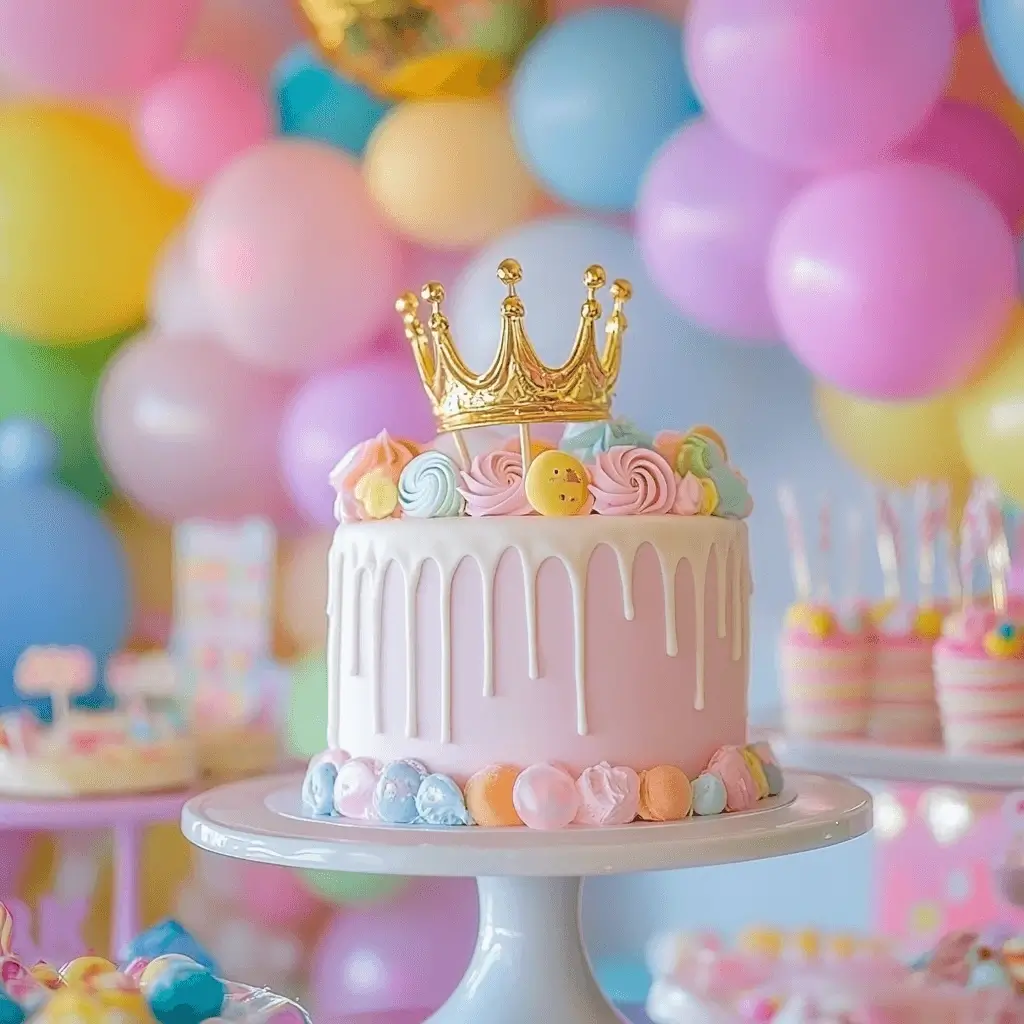
1. Baby Showers: Sweet and Soft
Pink cakes have long been associated with baby showers—especially when celebrating a baby girl. But don’t settle for cliché!
- Theme Idea: “Blush and Bashful” – Soft pink ombre layers, buttercream ruffles, and tiny fondant baby booties or rattles on top.
- Flavor Pairing: Strawberry rosewater cake with cream cheese frosting.
- Decor Tip: Use edible pearls and lace piping for an elegant, dreamy finish.
2. Valentine’s Day: Romantic and Rich
A pink cake adds a personal, heartfelt touch to your Valentine’s table—whether it’s for your partner, friends, or a “Galentine’s” bash.
- Theme Idea: “Hearts & Berries” – Heart-shaped layers, raspberry filling, and a deep rose-colored glaze.
- Flavor Pairing: Pink velvet cake with strawberry mascarpone frosting.
- Decor Tip: Adorn with chocolate-dipped strawberries or tiny sugar roses.
3. Birthday Parties: Bold and Playful
Pink cakes are birthday party favorites for all ages. The secret? Let the guest of honor’s personality guide the theme.
- Theme Idea: “Unicorn Magic” – Layers in varying shades of pink, edible glitter, rainbow sprinkles, and a gold horn cake topper.
- Flavor Pairing: Funfetti vanilla cake with strawberry frosting and marshmallow filling.
- Decor Tip: Add meringue kisses, macarons, or colorful candy shards for extra excitement.
4. Bridal Showers: Sophisticated and Feminine
Bring elegance and charm to the celebration of love with a refined pink cake that reflects the bride-to-be’s style.
- Theme Idea: “Blush & Gold” – Smooth pastel-pink fondant, edible gold leaf, and delicate sugar florals.
- Flavor Pairing: Rose and vanilla chiffon cake with lemon buttercream.
- Decor Tip: Incorporate the wedding color palette and floral elements for cohesion.
5. Anniversaries or Engagement Parties: Classic and Classy
Marking milestones with a pink cake adds a touch of sentiment and style.
- Theme Idea: “Pretty in Pink” – A tiered cake with gradient pink frosting and romantic floral accents.
- Flavor Pairing: Champagne-infused pink cake with raspberry buttercream.
- Decor Tip: Add metallic initials, edible glitter, or gold-dusted berries.
6. Seasonal Celebrations: Fresh and Festive
From spring picnics to Easter brunches, pink cakes bring color and joy to the table.
- Theme Idea: “Spring Bloom” – Naked cake style with layers of whipped cream and fresh berries, decorated with pansies or violets.
- Flavor Pairing: Strawberry-lavender cake with lemon glaze.
- Decor Tip: Use natural elements like fresh herbs, florals, or fruit for a garden-party look.
Whatever the occasion, a pink cake can adapt to the mood—be it whimsical, romantic, bold, or elegant. The key is in the details: tailor the flavors, colors, and decorations to suit the theme, and you’ll have a dessert that doesn’t just match the moment but defines it.
Choosing the Right Flavor for Your Pink Cake
When it comes to crafting the ultimate pink cake, color may catch the eye—but flavor seals the deal. A stunning exterior only goes so far if the taste doesn’t deliver. Luckily, pink cakes offer a wide spectrum of flavor profiles, ranging from fresh and fruity to luxurious and floral. Your flavor choice should align with both the occasion and the personal preferences of your guests. Let’s explore the most delightful options to bring your pink cake to life.
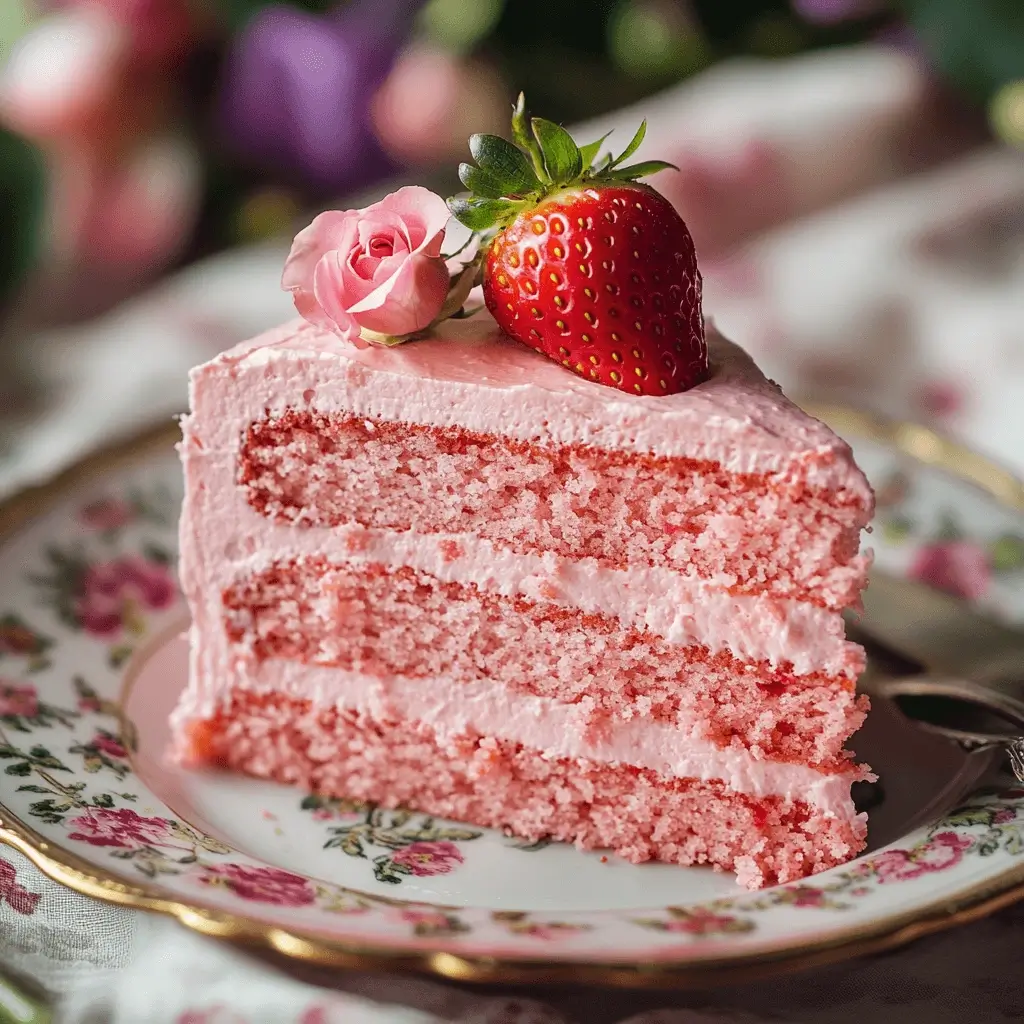
1. Strawberry: A Timeless Favorite
Strawberry is the quintessential pink cake flavor. It’s naturally sweet, universally loved, and easy to infuse into both the cake and frosting.
- How to Use It: Blend fresh or frozen strawberries into a puree and reduce to intensify flavor. Add it to the batter and buttercream.
- Pro Tip: Combine with vanilla or white chocolate for a richer taste.
- Best For: Summer birthdays, garden parties, or casual brunches.
2. Raspberry: Bold and Tangy
Raspberry gives a punchy, slightly tart contrast to the soft pink aesthetic. It’s perfect for those who love a fruity flavor that’s not too sweet.
- How to Use It: Puree and strain raspberries to remove seeds. Raspberry coulis also works beautifully as a filling between layers.
- Pro Tip: Pair with lemon zest in the batter or cream cheese in the frosting for extra brightness.
- Best For: Bridal showers, engagement parties, and sophisticated soirées.
3. Rosewater: Elegant and Aromatic
Looking for something with a hint of mystery and romance? Rosewater brings a delicate, floral fragrance that pairs beautifully with a pale pink palette.
- How to Use It: Add just a teaspoon or two to your batter or frosting. A little goes a long way.
- Pro Tip: Balance it with vanilla, cardamom, or almond for depth.
- Best For: Weddings, baby showers, and formal events.
4. Pink Velvet: A Chic Classic
Inspired by its cousin, red velvet, pink velvet cake has the same tender crumb and subtle cocoa undertones—just in a softer, rosier hue.
- How to Use It: Use a touch of cocoa powder and white vinegar with buttermilk to maintain the velvety texture. Color with pink gel food coloring.
- Pro Tip: Top with traditional cream cheese frosting for that signature tang.
- Best For: Retro-themed parties, romantic dinners, or anytime you want a crowd-pleaser.
5. Exotic Twists: Creative & Modern Flavors
Why stop at the classics? Try these adventurous combinations to make your pink cake stand out:
- Strawberry-Lychee: Tropical, floral, and refreshing.
- Raspberry-Champagne: Perfect for celebrations.
- Rose-Lemon: A refined duo with balanced sweetness and zest.
Your flavor selection isn’t just about taste—it’s part of the storytelling of your cake. Whether you’re aiming for nostalgic, bold, floral, or daring, choosing the right flavor will make your pink cake as memorable on the palate as it is on the plate.
Using Natural vs. Artificial Coloring in Pink Cakes
The color of a pink cake is its defining feature—soft, vibrant, or somewhere in between. But how you achieve that perfect shade can have a big impact not only on appearance, but also on flavor, texture, and overall appeal. Should you go all-natural for a clean-label cake, or rely on artificial colorants for consistent, saturated hues? Let’s break it down.
Natural Coloring: Beautiful and Clean, with a Few Challenges
Natural food colorings are a top choice for health-conscious bakers or those looking to keep their pink cake as close to nature as possible.
Common Natural Options:
- Beet Juice or Beet Powder: Adds a vivid pink or magenta tone without a strong flavor when used in moderation.
- Strawberry or Raspberry Puree: Dual purpose—flavor and color. Best when reduced to a concentrated consistency.
- Pomegranate or Cranberry Juice: Mild in flavor but delivers a lovely blush.
- Pitaya (Dragon Fruit) Powder: Bright pink with tropical undertones.
Pros:
- Cleaner ingredient list—no synthetic additives.
- Offers subtle flavor enhancements.
- Great for marketing to natural/organic audiences.
Cons:
- Can be affected by heat and pH levels during baking (color may dull or turn brownish).
- Less predictable results than artificial colors.
- May require additional steps like reductions or straining.
Artificial Coloring: Vibrant and Reliable, with More Control
Artificial colorants—especially gel-based food colorings—are the go-to for professional decorators and bakers who want precision and intensity.
Popular Options:
- AmeriColor Soft Gel Paste
- Wilton Gel Icing Colors
- Chefmaster Liqua-Gel
Pros:
- Highly concentrated—only a few drops needed.
- Heat-stable and consistent across batches.
- Wide range of tones, from pale blush to hot pink.
Cons:
- May slightly alter flavor if overused.
- Not suitable for all diets or ingredient restrictions (some artificial dyes are petroleum-derived).
- Can leave stains on hands or tools.
Finding the Right Balance
There’s no rule saying you must choose one or the other. Many bakers find success in blending the two:
- Start with fruit puree or beet powder for base color and flavor.
- Adjust intensity with a tiny amount of gel food coloring.
- This hybrid method gives you the natural taste with the vibrant visual effect.
Pro Tips for Coloring Success:
- Always test natural coloring agents in a small batter portion first.
- For deeper shades, chill the batter briefly after coloring to let pigments develop before baking.
- Remember: colors can intensify or fade once baked, so go slightly darker than your target shade if needed.
Whether you’re a purist, a pragmatist, or somewhere in between, understanding your options empowers you to make a pink cake that looks as amazing as it tastes—naturally vibrant or perfectly pigmented.
Decorating Ideas to Match Your Event Theme
A beautifully baked pink cake sets the stage—but the real wow factor comes from the decorations. Your cake’s design should reflect the event’s mood and personality, whether it’s a whimsical birthday bash or a sophisticated bridal gathering. Here are some theme-driven pink cake decorating ideas to match a variety of celebrations.
Princess Party Magic
- Design Ideas: Pink fondant with golden crowns, tiaras, or castle silhouettes. Think sparkles, edible glitter, and rosette piping.
- Toppers: Sugar pearls, fondant bows, edible butterflies.
- Flavors: Strawberry-vanilla or raspberry buttercream for that fairytale feel.
Rustic Wedding or Garden Soirée
- Design Ideas: Naked or semi-naked cakes with fresh flowers and berries. Use muted pink tones and textured frosting.
- Toppers: Eucalyptus sprigs, wildflowers, or calligraphy initials.
- Flavors: Rosewater or lemon-raspberry for elegance and freshness.
Tropical Birthday or Summer Party
- Design Ideas: Bright pink frosting with tropical fruit slices (pineapple, kiwi, berries) and paper flamingo or palm leaf toppers.
- Toppers: Coconut flakes, candied citrus, drink umbrella picks.
- Flavors: Pink guava, passionfruit, or strawberry-lime.
Minimalist & Modern Vibes
- Design Ideas: Smooth pastel pink buttercream with sharp edges, geometric shapes, and a single focal topper (like a sugar rose or gold bar).
- Toppers: Edible gold leaf, macarons, modern acrylic name tags.
- Flavors: Pink velvet with vanilla bean or champagne buttercream.
Seasonal Celebrations
- Easter: Soft pink marzipan eggs and floral piping.
- Christmas: Pink peppermint cake with snowflake fondant.
- Mother’s Day: “Bloom cake” with piped peonies or edible pressed flowers.
No matter the occasion, tailoring your pink cake’s design to the theme will create a cohesive and unforgettable centerpiece that guests will admire long after the last bite.
Conclusion: Let Your Pink Cake Tell the Story
By now, you’ve discovered how to select the ideal flavor, achieve the perfect pink hue (naturally or otherwise), master baking techniques, troubleshoot common mistakes, and decorate with meaning. Whether you go minimalist or maximalist, classic or bold, your pink cake is a blank canvas just waiting to be transformed.
A pink cake is far more than a dessert—it’s a mood, a message, and a memory in the making. Whether you’re celebrating a baby on the way, a bride-to-be, or simply life’s sweet moments, a pink cake can express joy, warmth, elegance, and even a touch of whimsy. But perfection isn’t about flawless fondant or five-tier stacks. It’s about intention, creativity, and love poured into every step.
So preheat your oven, mix with passion, decorate with flair—and let your pink cake become the star of your next celebration. Because when it’s made from the heart, a pink cake is always the right choice.

